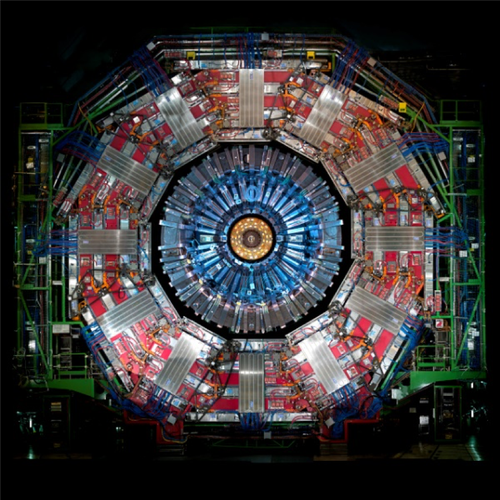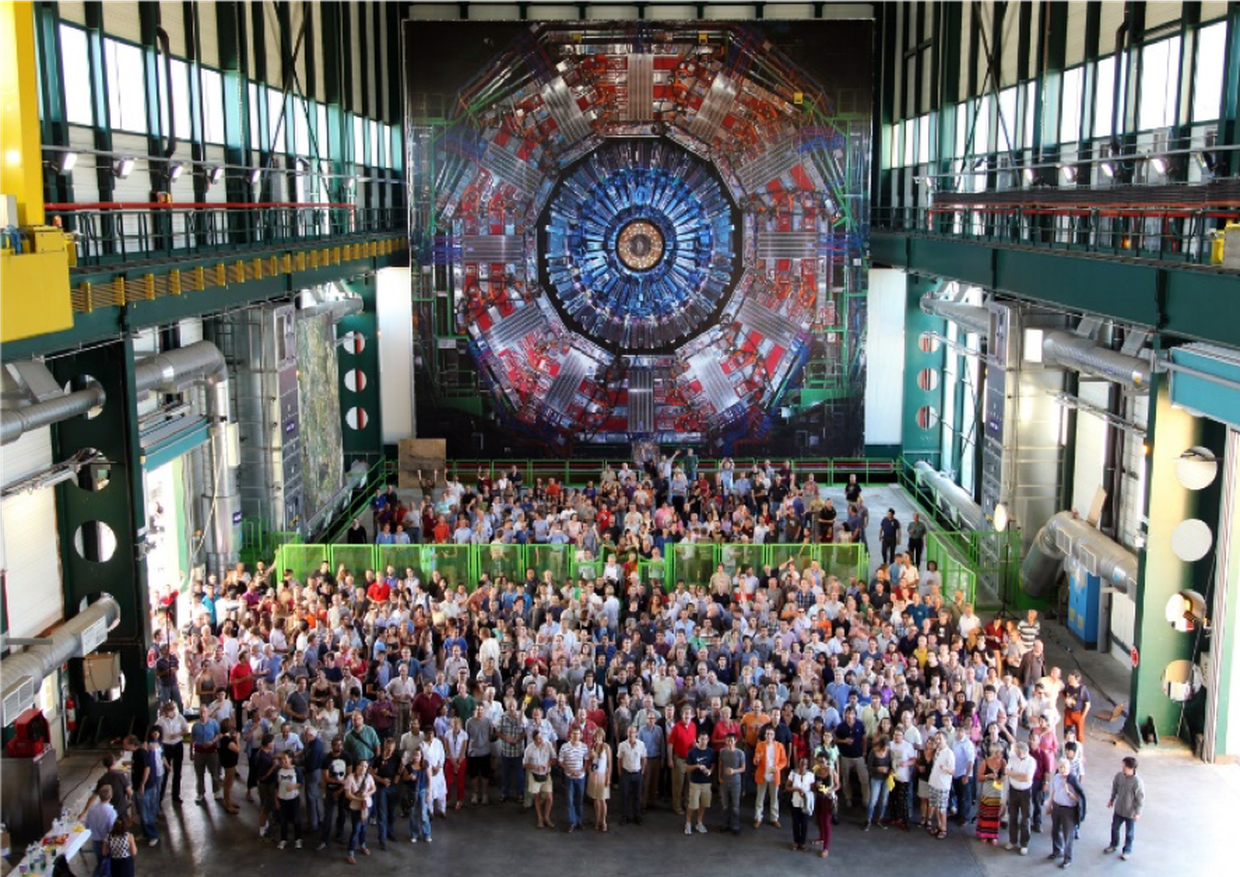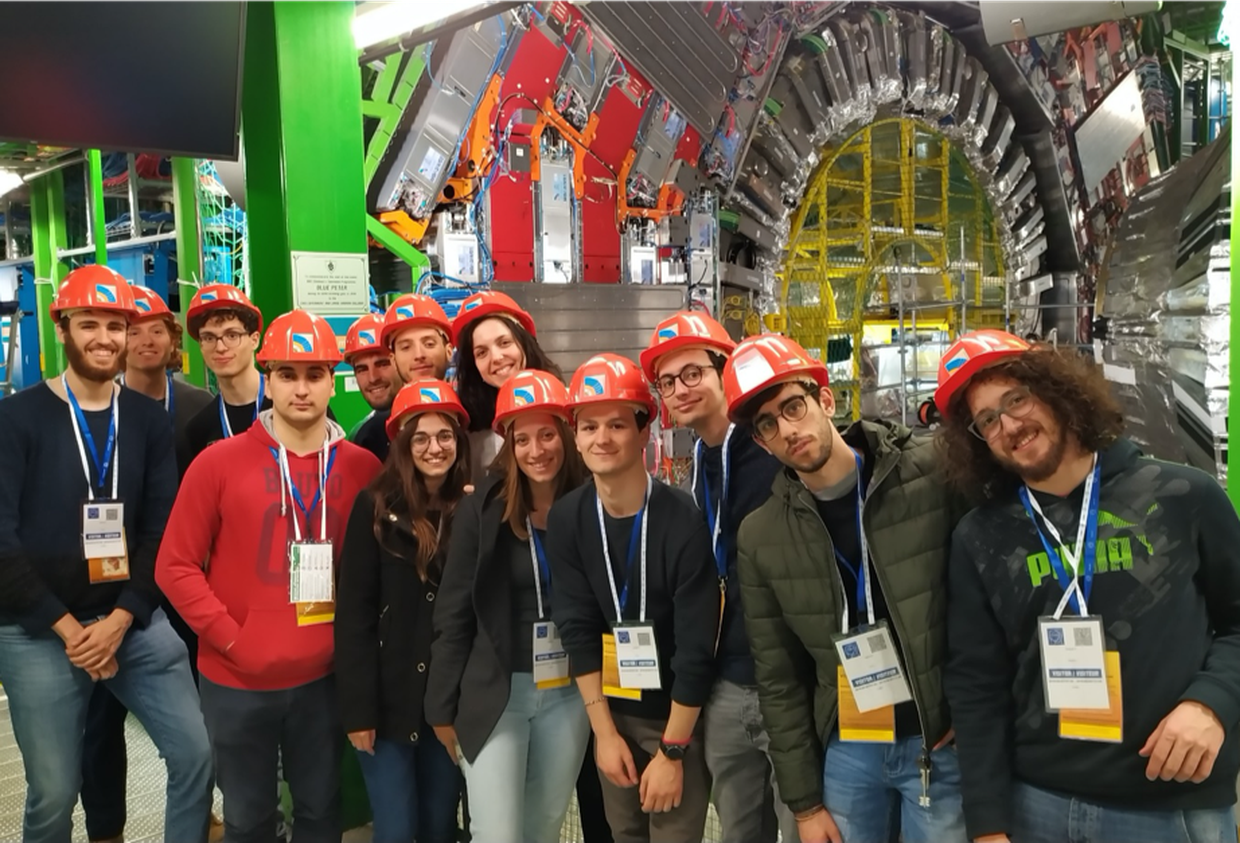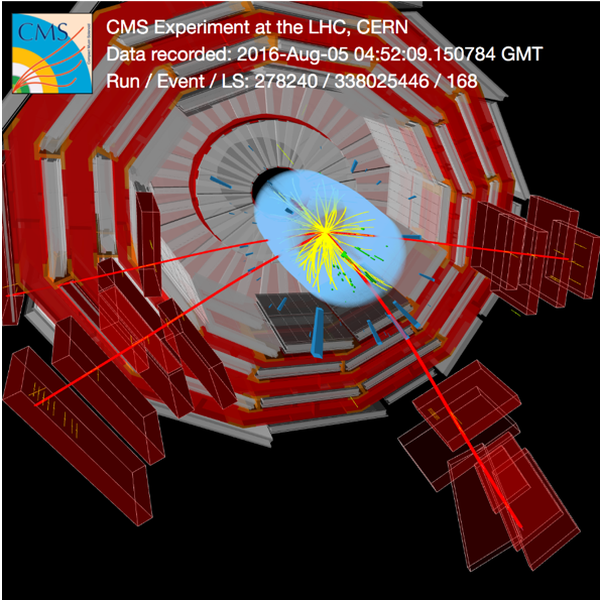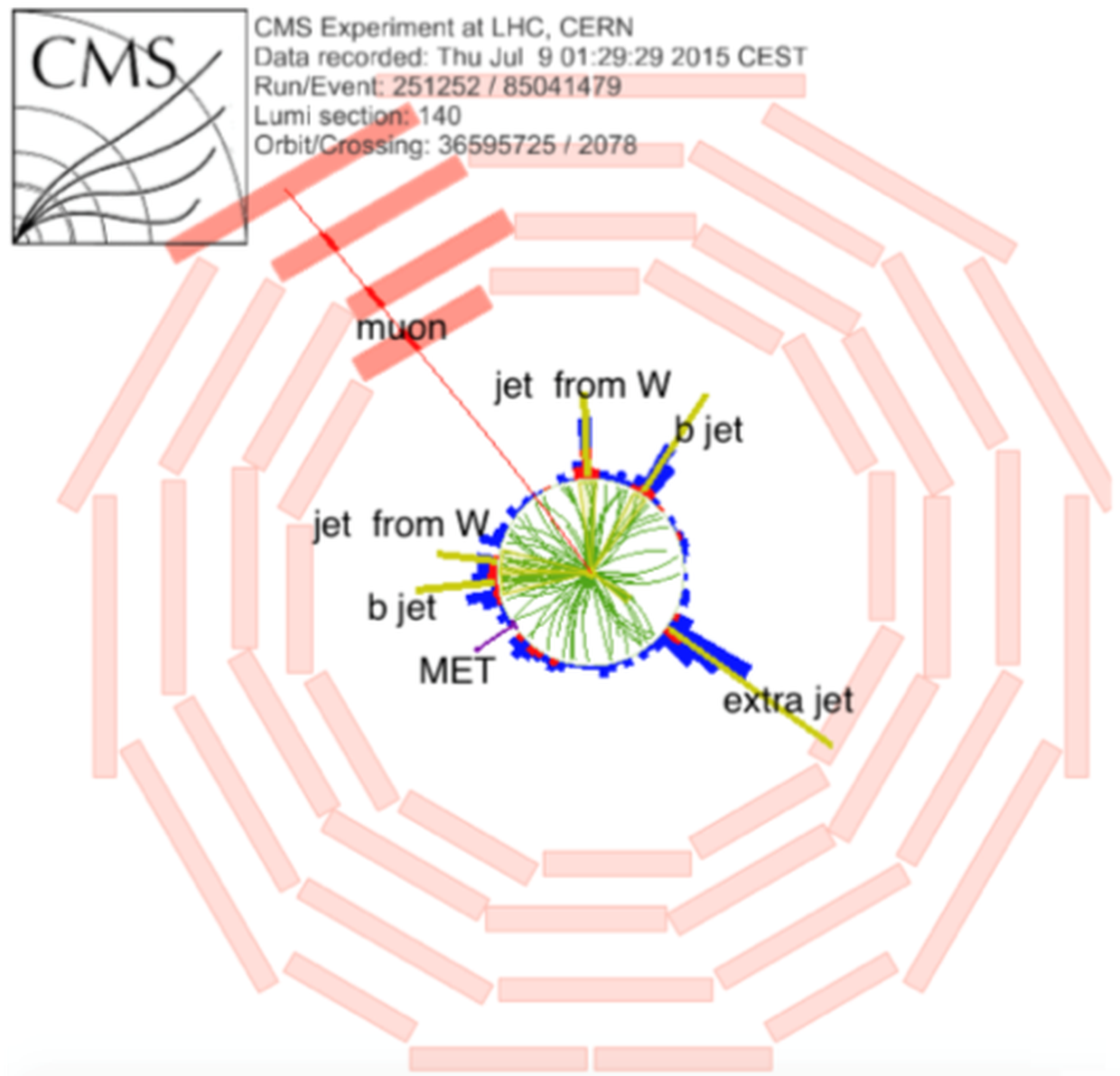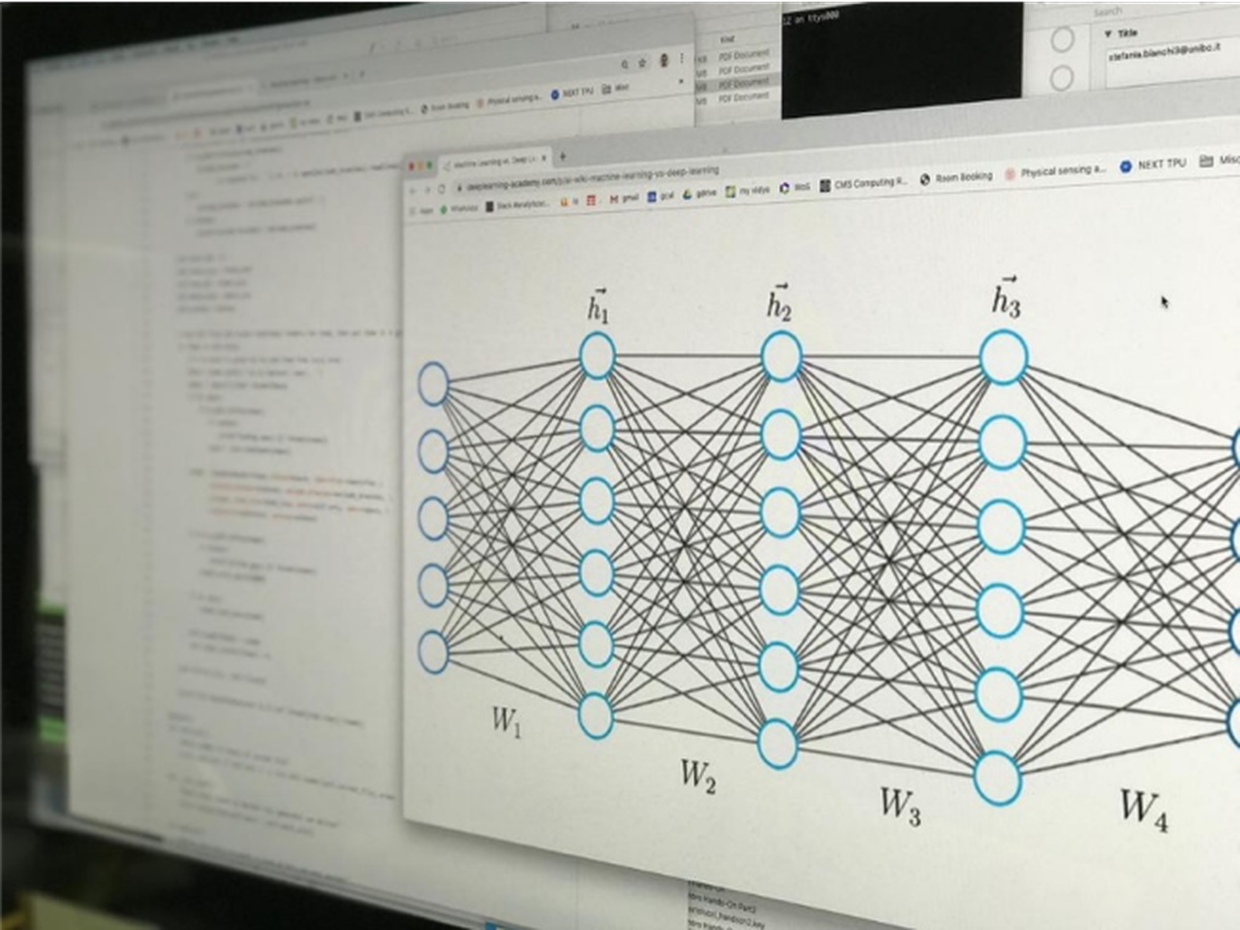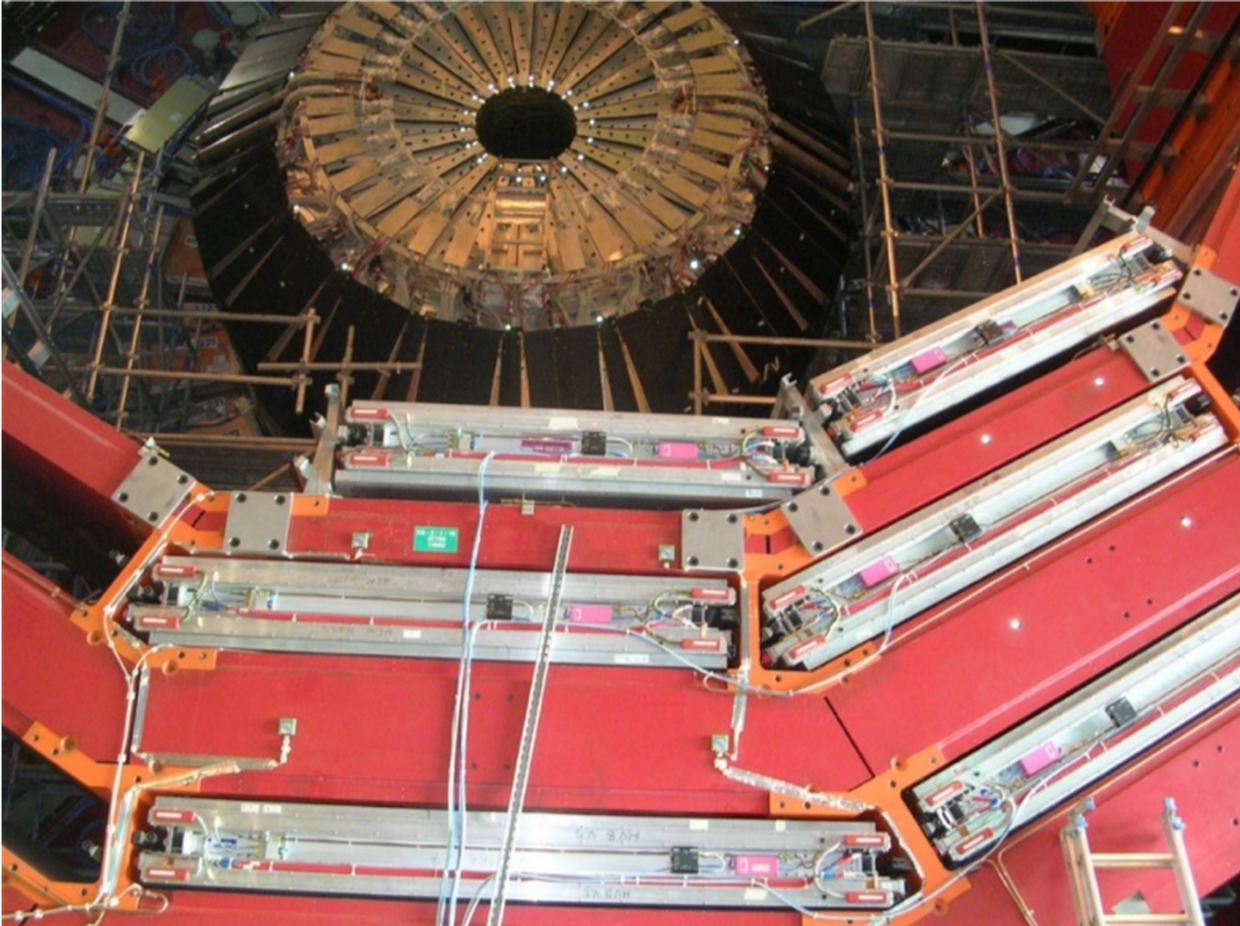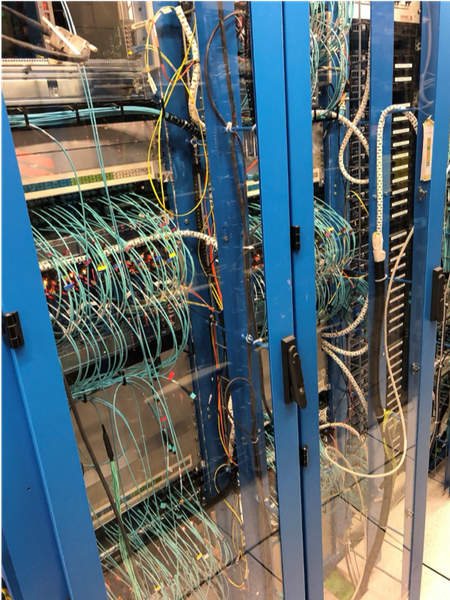The heart of the CMS detector is a giant superconducting solenoid, capable of providing a uniform magnetic field of almost 4 Tesla around the proton-proton collision point. Particle trajectories and energies are measured by the tracking system and the calorimeters inside the magnet, while muons, which are able toescape almost undisturbed, are identified and measured by muon detectors outside the solenoid. Selected events are sent to the computing grid, a worldwide system of interconnected computing and storage centers, which physicists can use to analyse CMS data from their desktop computer.
CMS Bologna group contributed to the design and construction of the muon detectors of CMS for the central region, which covers more than a thousand square meters and provides information for the triggering and the reconstruction of muons. Our experts continue today to ensure the operation and development of muon detector, trigger and software for the reconstruction, measuring its performance to ensure everything is in the best shape.
Central among the group activities are physics analyses. In the Higgs sector, we collaborate to measurements of the Standard Model Higgs boson properties and to the search for new Higgs bosons, predicted by theories beyond the Standard Model. Muons are important signatures for such measurements. We are also interested in the top quark, and we focus on hadronic final states, a very challenging task in the LHC environment, because of large background from QCD processes.
A leading role is being played also in CMS Software and Computing in the context of its infrastructure and operation. We are actively investigating the use of new approaches, such as Machine Learning and Deep Learning techniques, for the improvement of physics analyses and of CMS trigger and reconstruction algorithms.
Finally, we are working on the upgrade of the detector: the High Luminosity LHC project, set to start in 2026, will further increase the number of collisions that the machine will be able to produce for the experiments to observe. To cope with these new conditions, we are designing new muon trigger algorithms and electronics, to ensure our beautiful detector will provide excellent physics data for many years to come.
